 "JR1" (type35bugatti)
"JR1" (type35bugatti)
01/05/2016 at 12:10 • Filed to: Duesenberg
 4
4
 6
6
 "JR1" (type35bugatti)
"JR1" (type35bugatti)
01/05/2016 at 12:10 • Filed to: Duesenberg |  4 4
|  6 6 |
This article argues how Duesenberg automobiles developed their marketing plan for the Duesenberg Model J during the Great Depression. During an era of perhaps the greatest economic strife in modern history Duesenberg Automobile Company built 481 Duesenberg Model J chassis. !!!error: Indecipherable SUB-paragraph formatting!!! The Duesenberg Model J chassis was sold for $8,500 dollars adding a body to the car cost anywhere from $4,000 to over $17,000. In 1935 the most expensive Duesenberg ever, sold for the equivalent of almost $450,000 dollars. !!!error: Indecipherable SUB-paragraph formatting!!! The Duesenberg Walker Coupe sold in 1934 for $25,000 dollars. This automobile sold during the height of the Duesenberg company marketing campaign He Drives a Duesenberg. Perhaps the sale of the most expensive Duesenberg ever and the drastic difference in the marketing of Duesenberg automobiles was simply just a coincidence. What is not a coincidence however is that the company marketed and successfully sold the most expensive car ever made in America during an era of economic disaster. This contradiction would not have been possible without the excellent marketing and history of innovation at the Duesenberg Automobile Company.
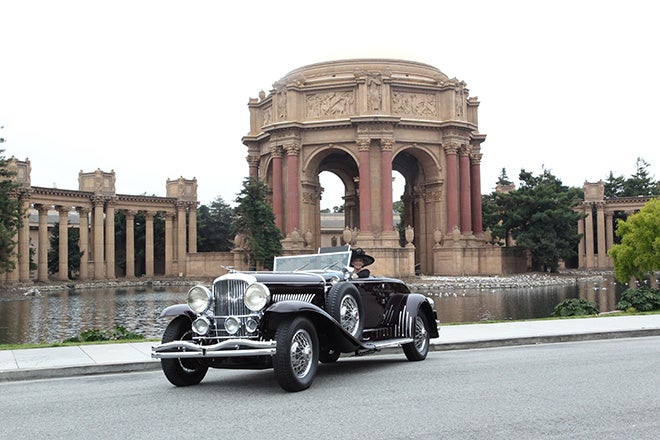
The year is 1935. In the heart of Hollywood rests the financial and cultural elite of the United States, the cinema stars. Among them is one of the biggest names in the business, Gary Cooper. Future winner of two academy awards for best actor Cooper was an actor that women swooned over and an actor that other men envied. In 1935, Gary Cooper was enjoying the success of an adventure drama The Lives of a Bengal Lancer. !!!error: Indecipherable SUB-paragraph formatting!!! To celebrate the success of his career thus far, Cooper bought his second Duesenberg. Unlike his previous Duesenberg however this car would not be one of hundreds. Cooper’s second Duesenberg would be far more bespoke and special. The 1935 Duesenberg SSJ was a car fit for a playboy. The first street car to have four hundred horsepower, the Duesenberg SSJ had an enlarged supercharger located on the four hundred and twenty cubic inch straight eight engine. !!!error: Indecipherable SUB-paragraph formatting!!! Cooper, no stranger to finely crafted cars, owned one of two SSJ Duesenbergs.The other owner was Clark Gable. Cooper was likely attracted to the car by the extravagant styling and excellent marketing the company had. Cooper’s wealth to buy Duesenbergs came from his outstanding box office success in movies such as The Texan, A Farewell to Arms, and Today We Live. !!!error: Indecipherable SUB-paragraph formatting!!! His combination of western adaptations and romance dramas made him one of the most versatile and sought after figures in the country. Furthermore his success transformed him from an actor to an American folk hero.
Cooper drives a Duesenberg. His persona and success fit perfectly into the marketing scheme of Duesenberg automobiles. Duesenberg advertising attracted upper-class individuals who could afford the best and expected nothing less than perfection. Cooper is one example of many celebrities that were lucky enough to own Duesenbergs during the era. There is a belief by some that Duesenbergs attracted new money and that the old money of the world bought more conservative cars. When looking at a list of owners however that argument becomes weak; Clark Gable, William Randolph Hurst, Mars Whitney, Howard Hughes, Mae West, and finally royalty such as Alfonso XIII of Spain, and the Duke of Windsor all bought the DuesenbergModel J. !!!error: Indecipherable SUB-paragraph formatting!!! It is quite clear then that the type of person attracted to the Duesenberg Model J were the elite one percent of the world. Outstanding craft requires outstanding wealth to own. And the Duesenberg offered more craft and engineering than almost any other car on the market at the time.
The wealth to own a Duesenberg was part of the draw of the Model J in the 1930s. In an era when a Ford Model A cost five hundred dollars many car companies were making supercars that cost six to eight times that much. This odd contradiction was likely due to the bomb of wealth and consumer credit in the Roaring Twenties. Most of these supercars were introduced to the market just months prior to the stock market crash in 1929. Therefore many car companies had to reevaluate the way they marketed their automobiles to meet a drastically different market. The Cadillac V16 and the Packard Twin Twelve were two American cars that were introduced to the market after Duesenberg introduced the Model J. Along with other luxury cars, the Duesenberg Model J was competing in a very limited and exclusive market place. Yet the company was still able to sell almost five hundred cars even though it cost more than the competition from Packard, Cadillac, Lincoln, and many others. The success of the Model J can be attributed to the excellent advertisement and marketing of the companyas well as the fine craft of the automobile. Duesenberg advertisements not only captured the minds of the wealthy, but it was also successful in making them pay exuberant amounts of money to acquire bespoke hand crafted automobiles.
!!! UNKNOWN CONTENT TYPE !!!
Fred and August Duesenberg were a pair of brothers who grew up in the great plains of the United States. The brothers were born in Germany and migrated to the United States in the late 1800’s at a young age. Mesmerized by speed the brothers started their path to automobiles like many men at the time, as bicycle mechanics. Over the time they moved from simple bicycle mechanics to more advance mechanisms. Once car companies employed them the engineering brothers became renowned for building exceptional engines that were durable and well equipped for racing. !!!error: Indecipherable SUB-paragraph formatting!!! It was on this basis that the brothers would begin to market their own products. They wanted to highlight the excellent engineering and craftsmanship that went into every Duesenberg product.
In 1915, the Duesenberg brothers realized that cars were not the only place that their engines preformed exceptionally. In 1915, the men decided to market their engines for aircraft use. One of their first advertisements rested heavily on the laurels of their racing achievements. The Duesenberg brothers marketed their engines saying, “Fool Proof” and “They hold many records in automobile racing.” !!!error: Indecipherable SUB-paragraph formatting!!! This simplistic ad was not in any way eye catching. Instead, the Duesenberg brothers Augie and Fred were adamant that engineering sells. The engine advertisement was incredibly basic, a stark contrast from the advertisements of the 1930s. These simple straight four cylinder engines produced less that 100hp and were used for the most pedestrian of aircraft. One notable feature about the engines was that they were water-cooled. From the basic four cylinders Augie and Fred would engineer more complicated engines for aircraft use as their market andexpertise on the product expanded.
In 1916, the Duesenberg brothers created an updated four-cylinder engine. The engine had a huge improvement in power. Producing up to 140hp the Duesenberg brother’s second attempt at building an aircraft engine would employ more extravagant marketing and therefore it had better success finding aircraft. !!!error: Indecipherable SUB-paragraph formatting!!! The marketing for the engine came in correspondence with the beginning of WWI. By this time the company was using less simplistic advertisements. The Duesenberg brothers obviously were employing artists to make their advertisements more eye catching. The advertisement featured an automobile with four men huddled around it and a biplane-flying overhead. During the 1910s pictures like this were not only state of the art, but also exciting imagery to the general public. This artwork drew the reader in to a technical description of the engine no longer using statistics but other traditional methods of advertising, “These manufactures have selected Duesenberg Engines, have paid more money for Duesenberg Engines, because they are honestly trying to make their cars mechanically perfect.” !!!error: Indecipherable SUB-paragraph formatting!!! Clearly hiring a marketing team was a much-needed improvement compared to the brother’s prior attempts at advertising.
Once the war started in 1917 for the United States, the American government needed contracts to build engines, boats, planes, and automobiles. Duesenberg never one to miss an opportunity, took it upon themselves and became an engine contractor for the United States government during World War I. During the war, Duesenberg was contracted to build the Liberty V-12 engine. After several months the contract was changed and Duesenberg was contracted to build 2000 Bugatti U-16 engines. !!!error: Indecipherable SUB-paragraph formatting!!! As Duesenberg’s patriotic prestige climbed building exotic foreign engines for the war, the company’s success expanded as well. The Duesenberg brothers focused on their engineering success and patriotic duty when marketing the company. The companies marketing slogan during the war was, “The power of the hour.” !!!error: Indecipherable SUB-paragraph formatting!!! Most of the advertisements promised that Duesenberg would return after the war. Other advertisements during the war highlighted this promise: a simple light lit with the name Duesenberg in bold print underneath it. !!!error: Indecipherable SUB-paragraph formatting!!! These warm light ads offered brief and welcome warmth during a dark period. When most ads in the industry were marketing patriotic duty and engineering the Duesenberg warm light ad gave the company an inviting persona. The Duesenberg ads during this era took a two prong approach; one, they highlighted the company’s patriotic duty and two; they added a certain level of warmth and caring. This mere lapse of advertising would be short lived however. After World War One, the company would return to focusing on engineering excellence in their advertisements.
After World War I Duesenberg automobiles built their first ever car as a stand-alone company. The Duesenberg Model A was the company’s first venture into the market of a wide public audience. Before the war Duesenberg specialized in engineering engines for competitive racing, boats, and aircraft. The Duesenberg Model A however, was a streetcar. First produced in 1921, the Duesenberg Model A lacked the glamour and style of the later Model J. Unlike Model J though, the Model A was a pure product of Fred and Augie. Light, nimble, and efficient are all by words that describe the Model A. The Model A was innovative as well, it was the first ever road car that came equipped withpower assisted brakes. !!!error: Indecipherable SUB-paragraph formatting!!! A straight eight-cylinder engine powered the Duesenberg model A. The engine was a 260 cubic inch motor that produced anywhere from 88 to 100 horsepower. The Duesenberg Model A was not an inexpensive automobile when it was released in 1921. The price was anywhere from $5,550 to $8,800; this made the Model A one of the most expensive automobiles on the market. Duesenberg’s original estimate of selling 2000 cars a year was woefully misguided. By the end of the car’s lifespan the company had sold only 650 Model As over the entire car’s production run from 1921 until 1926. !!!error: Indecipherable SUB-paragraph formatting!!! One could argue this was due to the company’s poor management and misguided approach to advertising. The automobile itself was a classic example of engineered excellence by the Duesenberg brothers.
To market the Duesenberg Model A, the Duesenberg brothers used their classic strategy of marketing - a focus on superior engineering. As engineers the Duesenberg brothers believed the best way to get a person to buy your product was to demonstrate it was a masterful combination of craft and innovation without any exceptions.

During this early era of automotive marketing one of the best ways to prove the Duesenberg model A’s credentials was via a demonstration. The demonstration Duesenberg decided to do involved a cross-country road trip. Across-country road trip was nothing new by 1921. Packard was the first company to successfully cross the continental United States, achieving this merit in the early 1900s. The demonstration planned by the Duesenberg brothers was going to be far more ambitious. On the Indianapolis Motor Speedway, where Duesenberg foraged its immaculate name for the company, was where the company was planning on running the entire length of United States in a Duesenberg Model A without stopping. A Model A would lap the Indianapolis speedway until it reached the equivalent distance of traveling the length of the United States. Unsurprisingly, Duesenberg was successful. The trip took slightly over fifty hours without a single malfunction. !!!error: Indecipherable SUB-paragraph formatting!!! This publicity stunt certainly highlighted the engineering credentials of the Duesenberg name, however it is unclear if it helped Duesenberg Model A sales.
One of the most tried and true ways to boost the sales of any automobile is classic advertising. Classic advertising is something Packard was doing masterfully during the Roaring Twenties, just “ask the man who owns one.” This classic slogan of Packard’s highlighted the excellence of their automobiles. And drawing upon that slogan Packard was sure to use celebrity endorsement to sell their automobiles. Slogans and celebrity endorsements are strategies Duesenberg advertising would lack for several years. Packard advertising said, “Five out of six round the world fliers, when asked which among all of the motor cars in the world they would like as gifts in recognition of their history-making flight, voted for the Packard Eight.” !!!error: Indecipherable SUB-paragraph formatting!!! This was an example of Packard advertising. It highlighted the engineering buttook a great deal of inspiration from appealing to the emotional aspect of carbuying as well. Packard advertisements also said “Serving America’s Aristocracy.” !!!error: Indecipherable SUB-paragraph formatting!!! What is most interesting about this ad is the “aristocracy” they placed in thead. It was not Charlie Chaplin or another Hollywood movie star it was the intellectual elite of the nation. In the picture were five of the nine Supreme Court Justices. This suggests that Packard was marketing not to the new money of the nation but the established wealth that had been in positions of power for a generation or more. The Packard Eight of the era outsold the Duesenberg Model A by a factor of more than ten to one. One could argue this was due to Packard’s impeccable reputation during the era. More than the company’s reputation however, the Packard Eight outsold the Duesenberg due to a combination of better pricing, better infrastructure, and more prominent ad placement.
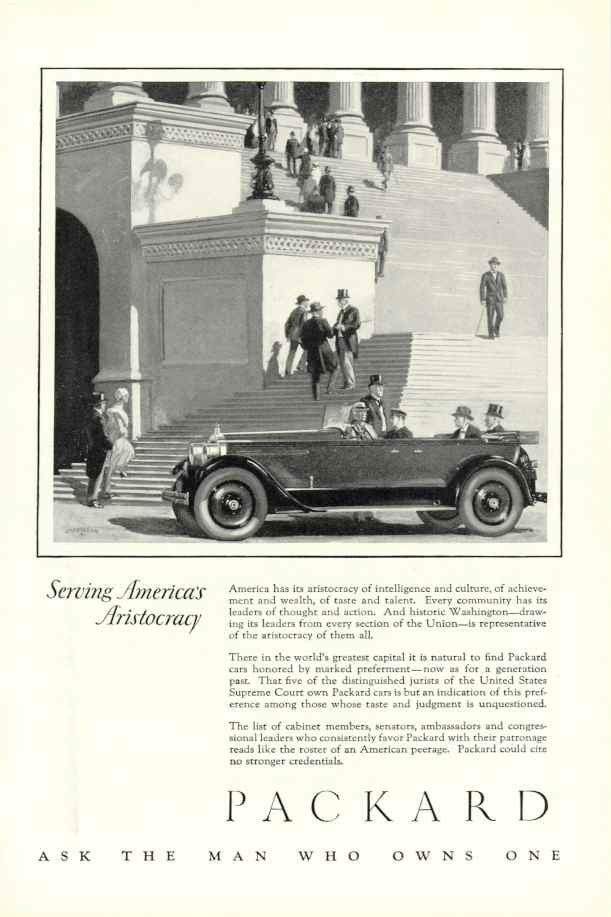
With Duesenberg’s main competitors outselling them it was clear they needed to reconsider how to market the car to the general public. In response to Packard and other companies building straight eight engines, Duesenberg launched a new ad campaign to remind the public who made the straight eight first. On the eve of the auto show season in early spring Duesenberg launched an ad stating, “The original straight eight with four wheel hydraulic brakes.” !!!error: Indecipherable SUB-paragraph formatting!!! This advertisement issued in the 1924 edition of Motor Age magazine was both straightforward and basic. Duesenberg was making one of the greatest cars of the decade yet they could not seem to capture the romance of building anengineering marvel. While it was an excellent design in every way the companywas failing to market the idea of race on Sunday and sell on Monday. Midwaythrough the Duesenberg Model A production run the Duesenberg company realizedthis mistake and changed their slogan to “Duesenberg Eight, The Grand Prix Car.” !!!error: Indecipherable SUB-paragraph formatting!!! Here we begin to see an early attempt by Duesenberg to introduce an ad that tried to bring in fans not looking for an exercise in engineering success but an automobile that is a status symbol. The company was not all that successful in achieving this goal however. Packard, Lincoln, and Cadillac all had more attractive ads that left the buyer with an impression that owning an automobilewas more than just a owning an automobile. It was a designation of status andsuccess. While Duesenberg’s name certainly carried these sterling credentials it would be some time before the ads would reflect the pedigree of the product.
Duesenberg Model A production ended in 1926 after disappointing sales. The car was notable to meet sales expectations of over 2,000 cars per year. Selling a more modest 650 cars over a six-year span. The failure of the Duesenberg Model A waslikely due to the costly price of the automobile. Furthermore the company wasnot able to engage the customer in inventive and engaging advertisements.Duesenberg might have built one of the best cars manufactured, however they failed to market those engineering successes to the right people.
When the Duesenberg Model A went out of production in 1926 it was clear to many that the future of Duesenberg automobiles was uncertain. E. L. Cord was one of the moguls in the automotive world who realized this. Already an owner of anotherautomobile company, Auburn, Cord seized the opportunity to buy the DuesenbergCompany and expand the reach of his Indiana automotive empire. This transactiontook place in October of 1926. Now the greater Auburn automotive companyoffered both upper middle class cars with their Auburn sales and super wealthysales via Duesenberg. Cord foresaw a grand future for the company saying,
The purchase of the Duesenberg factory is the culmination of my plans to be able to offer the world an automobile of undisputed rank. In fact the finest thing on four wheels. Duesenberg cars will be strictly custom built, the owners selecting their own body styles, their owncolors. The price will probably be $18,000, no matter what model, from racer to limousine. We will give the buyer 120 mph speed if desired. Naturally, the production of this type of automobile, which carries a warranty of fifteen years,will be limited, and we are now taking orders for delivery within six months. !!!error: Indecipherable SUB-paragraph formatting!!!
Cord was a man of his word. The Duesenberg Model J lived up to the ideas and visions of Cord. Indeed the car would go 120 mph, it would be both luxurious and sporty, and finally the priceof the automobile would be a least $18,000 if not more. This statement by Cordis more though than just a business statement of the company’s future goals. It is an advertisement. Such exceptional credentials would have been incredibly attractive to the automotive enthusiast of the era. There is no doubt Motor Age and countless other enthusiast driven automotive magazines were reporting the new and exceptional Duesenberg.In the age of the roaring twenties Cord made a statement that likely reverberated among the halls of Wall Street and the hills of Hollywood.Furthermore Cord’s statement in the Indianapolis Star was a clear indicator that it was not the ideas of Fred Duesenberg tobuild the Model J but the ideas of E. L. Cord. Another piece of information one can find from this statement is the idea to build the ultimate Duesenberg came almost three full years before the stock market crash of 1929. Therefore the initial production of the Duesenberg Model J was not a calculated risk duringan economic disaster but instead a classic example of a company capitalizing oneconomic prosperity to sell a incredibly expensive product.
The public would get their first glimpse of the Duesenberg Model J in December of 1928 at the automotive salon in New York. This preproduction car was oddly shown to the public without any badge or designation of make. An advertisement stated, “The superlatively fine has no need to be boastful…So confident is Duesenberg that a nameplate is considered superfluous.” !!!error: Indecipherable SUB-paragraph formatting!!! This would proved to be a mistake for the Duesenberg Company. Shortly thereafter the nameplate would reemerge on the car. The introduction of the Model J was met with considerable fan fare. Orders were immediately taken and the company appeared to have fulfilled their illustrious promise and built “the world’s finest car.”
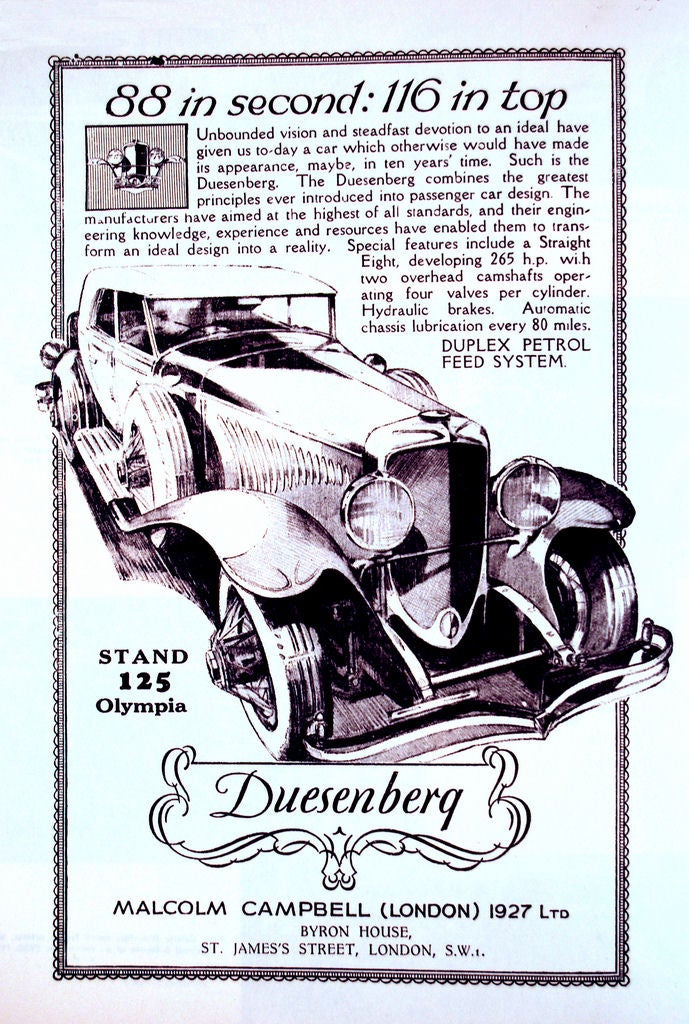
With the introduction of the Duesenberg Model J a new era of coach building and fine luxury was introduced into the automotive world. The Model J was the first car to usher in the new era of fine luxury cars sparring no expense. Unfortunately the Model J personified the height and wealth of the Roaring Twenties right as the world economy threatened to send this utopia back into the stone ages.Nevertheless Duesenberg would soldier on. In early 1929 the company shipped outfirst orders of the Model J and by 1930 Duesenberg had expanded the engineering and design department to include the prolific craftsman, or as it is called in the industry coachbuilder, Philip Durham. This was a clear statement to the public that Duesenberg was not worried about the economic strife and would continue the production and prestige of the Duesenberg Model J. !!!error: Indecipherable SUB-paragraph formatting!!!
The Model J was an engineering marvel and highly desired luxury automobile when it was put on sale. Magazines around the country reported the highly anticipated newproduct from the skunk works of the new Duesenberg Incorporated a division of Auburn. So renowned was the new automobile that automotive enthusiast magazinessuch as MoToR stated,
The Model J is as beautiful as it is powerful. Its lines express speed and strength gracefully without the slightest suggestion of clumsiness. Radiator and hood lines are different from anything heretoforeseen, and this, in conjunction with it’s other features, including sweeping fenders longer than any produced heretofore, give the ensemble a very rich,distinguished appearance. !!!error: Indecipherable SUB-paragraph formatting!!!
MoToR magazine was one of many magazines full of giddy automotive journalist that adored the new Duesenberg. This phenomenon set the course forthe future reporting of the Duesenberg Model J - full of superlatives withlittle to no criticisms. Even today when one reads a Duesenberg article asimilar rhetoric is used, “The value of a Duesenberg was partly its staggering performance and partly its undeniable beauty, but primarily its cost to build. !!!error: Indecipherable SUB-paragraph formatting!!! Over eighty years have past since the first Duesenberg took to the road yet the praise for the Model J never ceases. This automotive reporting both now and inthe 1930s helped further the myth and the legend that is the Duesenberg ModelJ. Seeing such high praise for a product is why the Duesenberg Model J since introduced at the Salon in 1928 has always and will always be in demand. Wealth is attracted to greatness and time and time again throughout countless articles the wealthy could see that the Duesenberg Model J was great.
What made the Duesenberg so fantastic was a combination of engineering and styling that was unmatched in the era. A signature straight eight engine withracing-derived dual overhead camshafts powered the Duesenberg Model J. A design that was so advanced after the Model J went out of production would be absenton American cars for several decades. The engine produced 265 horsepower. !!!error: Indecipherable SUB-paragraph formatting!!! This made the Duesenberg the most powerful passenger car on the market. The engineering of the Model J was second to none because the aluminum body was stronger and lighter than steel. The car was relatively light for the era weighing in at 4500 pounds. !!!error: Indecipherable SUB-paragraph formatting!!! Of course this weight could be significantly larger with the coach built bodies that were put on the Duesenberg. Gordon Buehrig was responsible for most of the Duesenberg coach built bodies, which are the separate body stales such as convertible, coupe, sedan that got put on the car. He was a prolific designer hired by the company at age 25 in 1929. !!!error: Indecipherable SUB-paragraph formatting!!! The styling of the Model J helped push automobiles into the climax of automotive design. The luxury and beautify that went into every Model J certainly helped to make it one of the finest automobiles going down the road. When comparing the Model J its competitors the difference in styling was obvious. Companies such as Packard and Rolls Royce had conservative body styles that while attractive did not make any significant contribution to automotive design. The Model J however symbolized the extravagance of the Roaring Twenties to the buying public.
Marketing to the wealthy in the Roaring Twenties was not something E. L Cord took lightly. E. L Cord was a businessman unlike when Fred and Augie Duesenberg ranthe company as engineers. His ideas on how to market the Duesenberg differedgreatly from how Fred and Augie marketed the Duesenberg Model A. Cord’s distinctive ideas stemmed from his personal experiences. Unlike Fred he was not an engineer. Cord got his start in the automotive world by buying cars at cheap prices fixing them up slightly and selling them for a higher price. Aftermaking several hundred dollars profit on each car he flipped Cord moved up the ladder to selling cars at dealerships and later running a Chicago agency which prospered under Cord’s leadership. It seemed everything he touched turned to gold therefore when he bought out the abysmal Auburn company in 1924 he was quickly able to turn a profit by restyling the cars and painting them extravagant colors. !!!error: Indecipherable SUB-paragraph formatting!!! Therefore Cord was much more the classic salesman.
As the classic businessman Cord thought it would be in Duesenberg’s best interest to hire a new ad agency, P. P and Willis marketed “The World’s finest motorcar.” This would be just one of the many statements P. P and Willis put in the first advertisements to market the Duesenberg Model J. In 1929 shortly after the New York Salon the first round of advertisements appeared in magazines across the country. The early advertisements of the model J would take a two-prong approach to market to the aristocracy across the world. Market the engineering success of the Model J and the prestige of the automobiles bespoke craftsmanship.

P.P and Willis knew that Duesenberg would not survive if it were only marketed in magazines that focused on engineering and performance such as Popular Mechanics and Motor Age. A car of exceptional wealth needed to be marketed in the lifestyle magazines that the social elite were reading at the time. Therefore for the first time on a large scale Duesenberg marketed the Model J in magazines such as Time and Vanity Fair. Following the example set by companies such as Packard and Cadillac. The advertisements in these magazines were minimalist. Instead of showing a Duesenberg winning a raceone would see a stately portrait of a Model J with little to no background. !!!error: Indecipherable SUB-paragraph formatting!!! The focus was meant to be on the styling done by Gordon Buehrig and other coachwork companies. A Model J did not have to have a regal background to exaggerate the wealth of the automobile. The name alone and the styling was enough to draw the reader in. Along with these minimalist designs, the advertising agency elected to feature a minimalist description as well. One of the simple advertisements stated, “The same motive which actuates the creation of a masterpiece, prompts the building of this, the world’s finest motor car…to produce the best, forgetful of cost.” !!!error: Indecipherable SUB-paragraph formatting!!! This minimalist description did not burden the reader. Instead the reader received a statement of excellence and how to contact the company. It is likely this marketing strategy, along with the wonderful press the car received, is what caused a fluid of orders in the early days of the Model J’s history. Early production Duesenberg Model Js were not bought by the new money of Hollywood.Most early orders were from New York and Chicago that had well-established endowments.
The old slogans of the Duesenberg Company were still prevalent in their advertising during 1929. While the company used new publications and innovative marketing to attract new buyers they also still advertised the engineering success in automotive publications the company had targeted since the Model A. These ads had a far larger word count and focused on the engineering of the Model J not the design. While this certainly helped to promote the legendary engineering excellence of the company it likely did less to boost sales. The few enthusiasts wealthy enough to own Duesenbergs were likely drawn in by the ads featuring the engineering credentials of the Model J. The design of the magazine advertisements were far more cluttered then those found in the lifestyle magazines,either featuring small pictures of the Model J or large pictures of the J cluttered with words and specifications around it. One ad featured in The Motor stated, “88 in second: 116 intop.” !!!error: Indecipherable SUB-paragraph formatting!!! This ad exemplified the original practices of Duesenberg advertising that targeted enthusiasts by promising superior engineering and performance. One must imagine that the idea to advertise the engineering specifications of the Model J were not from Cord but instead the engineer, Fred Duesenberg.
One has to wonder if the approach of advertising engineering prowess was the beststrategy to sell the Model J. Other companies during the era were no longerusing the engineering approach to sell their cars. By the late 1920s mostluxury automotive advertising had changed. Chrysler was being very artistic with their advertising during the late 1920s, using abstract pictures and artdeco design to promote their automobiles. The company was marketing the Chrysler Imperial as “The most powerful American car” and not showing an image of a car but instead a stylized art deco picture with an artistic automobile moving through the wind at great speed. !!!error: Indecipherable SUB-paragraph formatting!!! In this advertisement one notes that little to no phrases were used. Nor was the price of the automobile listed. It was just an artistic image of an automobile going fast. A quick glance at the advertisement could draw the reader in and capture their attention with thegreat imagery. While Duesenberg was busy totting the excellence of their aluminum-crafted automobile Packard emphasized their “Luxurious Transportation.” !!!error: Indecipherable SUB-paragraph formatting!!! In these ads Packard was highlighted the value of their automobiles, the lackof depreciation, and the excellence of Packard service. !!!error: Indecipherable SUB-paragraph formatting!!! Even though Duesenberg was such a force of engineering excellence it would be hard for the company to topple the established order of the premier luxury companies who had been selling cars to buyers since the late 19 th century. For Duesenberg to really shine it would take more than just excellent advertising, engineering, and design. They would have to capture the buyer through excellent service and beautiful ads. Under the leadership of E. L. Cordthe early success of this was already showing however, the company would needto bolster their command in advertising to truly capture the market and thebuyers in the luxury market.
After the first wave of Duesenberg advertising, P.P and Willis introduced a new campaign. The advertising campaign in 1930 is notable because for the first time ever no advertisements were made in automotive magazines; like Ferrari, Lamborghini, or Rolls Royce today all the Duesenberg advertisements in 1930 were in magazines such as Country Life and Vanity Fair . The target market was no longer the enthusiast. Cord had fundamentally changed the atmosphere with which Duesenberg marketed and tried to sell their automobiles. By 1930 almost all advertisements focused on luxury not engineering. Furthermore the company was finally targeting the markets they had needed to target since the beginning ofthe Duesenberg Model A. These advertisements in Country Life and elsewhere used rhetoric such as this, “Duesenberg excels…Bodies are custom designed, by the work of the world’s leading coach builders, who have spared no effort to produce designs of marketed originality,and of quality.” !!!error: Indecipherable SUB-paragraph formatting!!! This form of rhetoric was more important to a luxury buyer. Excellence incraftsmanship is always welcome, as is individuality, which is exactly what the 1930 Duesenberg ads promised. Furthermore, these ads featured bodies that were not extravagant or outlandish but instead, classical town car and sedan bodies.These styles of coach built bodies were for the owner who could not be bothereddriving themselves, town car and sedan bodies were for those who wanted to be chauffeured.
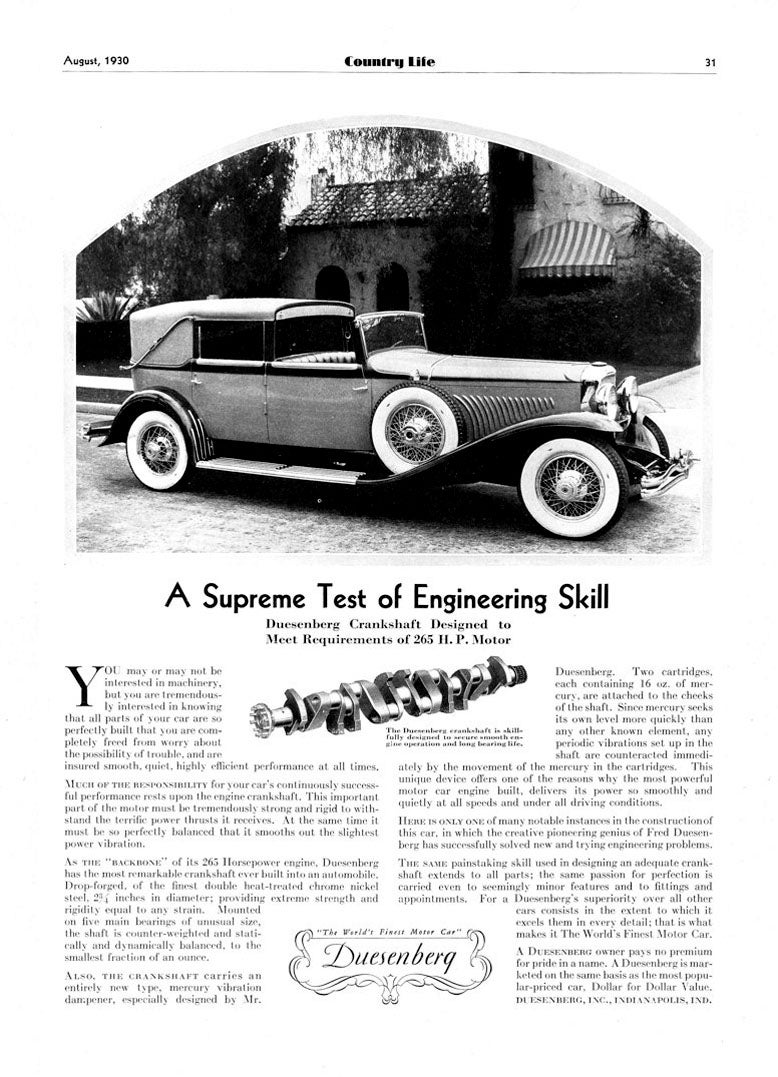
Duesenberg continued their new theme of marketing to a new market going into 1931 as well. The automobile advertisements of 1931 were the most basic yet created for a Duesenberg. With a stylized graphic surrounding the name Duesenberg in astately font little else was used in the advertisement besides the design ofthe Model J. These exceptionally basic advertisements by P.P and Willis served the company well. 1932 marked a high point in Duesenberg Model J sales. This sales success would not have been possible without the revised marketing strategy of Duesenberg. In 1931 the company used a basic advertising layoutthat boasted design and power. The design helped draw the buyer in and the power figures assured that no other automobile would compare. Furthermore like in 1930 the company was now exclusively advertising in magazines such as Country Life, Vanity Fair, Time, Life, and other lifestyle magazines. Perhaps one of the best ads in the 1931 marketing campaign was composed of eight body styles ranging from grand touring two door convertibles to four door stretch limousines. !!!error: Indecipherable SUB-paragraph formatting!!!
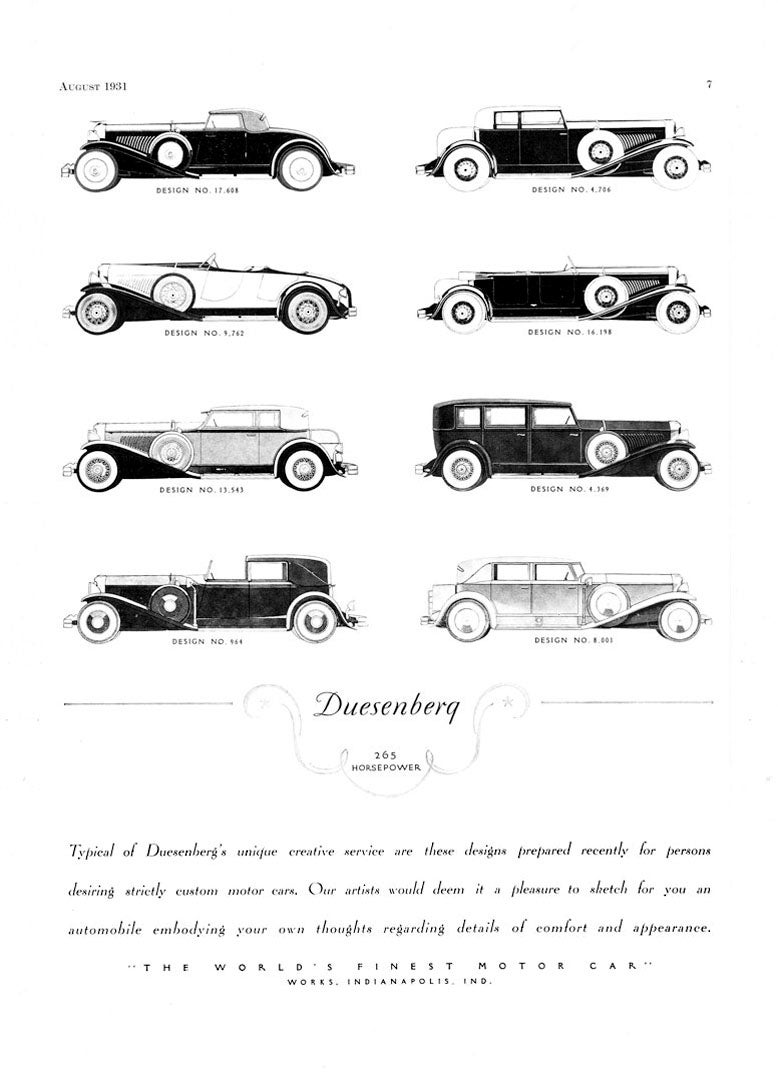
This wide assortment of body styles was just a teasing glimpse of the kind of beautythat could be mounted on a Duesenberg Model J chassis. Out of the wide assortment however P. P and Willis acknowledged the following,
A decided trend toward individuality in motor cars is reflected in the increased demand for strictly custom built automobiles in the higher price field, according to H. T Ames, vice presidentof Duesenberg Inc. Evidence of this trend will be most noted in salons thisyear, and its influence will probably be felt throughout the entire industry he predicts. !!!error: Indecipherable SUB-paragraph formatting!!!
Surprisingly almost four years into the Great Depression the prediction stated in the press release was correct. The demand increased in an era of economic strife. To meet this demand multiple companies such as Packard, Cadillac, Lincoln, Rolls Royce, and others built even more expensive cars to compete in the same market Duesenberg was in. To meet this anticipated demand Duesenberg not only created the successful marketing campaign in 1931 but it would also introduce the highly exclusive Duesenberg Model SJ.
The Duesenberg SJ was the highpoint of Duesenberg engineering. A straight eight-cylinder engine powered the Duesenberg SJ. The 420 cubic inch engine also came with a supercharger. Introduced in May 1932, the supercharged SJ helped sales increase slightly. With 36 models sold, the SJ provided roughly eight percent of all Duesenberg sales. !!!error: Indecipherable SUB-paragraph formatting!!! This likely helped make 1932 the most successful sales year Duesenberg would ever have. This year also marked a turn in the American psyche. No more would the Great Depression be a small crisis. By 1932 the people of the country were beginning to realize that this economic lull would impact the very fabric ofthe American economy. The Great Depression was going to endure for a number of years. By 1932 the economy reached its lowest point and was cause for panic among the American public. !!!error: Indecipherable SUB-paragraph formatting!!!
Duesenberg would be on slippery slopes from this point forward. In 1932, while the company was experiencing a plethora of sales Fred Duesenberg passed away in a horrific accident in Pennsylvania on the Lincoln Highway. Fred was thrown from the car that bared his name and passed away from complications after the accident. !!!error: Indecipherable SUB-paragraph formatting!!! This left the company in the hands of E. L. Cord. While Cord presented himself as an excellent visionary for business his corrupt practices behind the scenes did not bode well for the future of the company. He lacked the engineering skills to help ignite passion into the elytrous nameplate. Fred’s death therefore along with the falling markets in 1932 was the writing on the wall for the great marque as well the rest of Auburn automobiles’ conglomerate.
Nevertheless the company still needed to be managed. The Duesenberg Model J continued tosell at a steady pace. In 1933 the Model J nicknamed “twenty grand” due to the automobiles price tag, was displayed at the Century of Progress. Even during the bleakest hours of the Depression one could still appreciate the fine coachwork of a Duesenberg at major events. !!!error: Indecipherable SUB-paragraph formatting!!!
In 1934, there was still a pulse emitting from the Duesenberg factory. From the advertiser a designer by the name of Paul Gerding had a revolutionary idea. !!!error: Indecipherable SUB-paragraph formatting!!! Instead of selling the Duesenberg Model J by advertising the car it was time for the automobile to be removed from the equation of advertisements. No longer would one see a Duesy when they glanced at advertisements in Vanity Fair, The Spur, and, Vogue. The one percent would see artwork of the wealthy. People of power in stately attire inextravagant locations would be the focus of the final ad campaign from Duesenberg. Gentleman of wealth would be seen hunting with their dogs whileholding a double barrel shotgun. “ He Drives a Duesenberg.” !!!error: Indecipherable SUB-paragraph formatting!!! These men of immaculate power would be shown to remind the final Duesenberg buyers what kind of wealth and elite clubthey were entering when they bought a finely crafted Duesenberg. Men of state, wealth, and power owned Duesenbergs. These provocative images certainly appealed to the wealth of the world that had withstood the economic minefield that was the Great Depression.
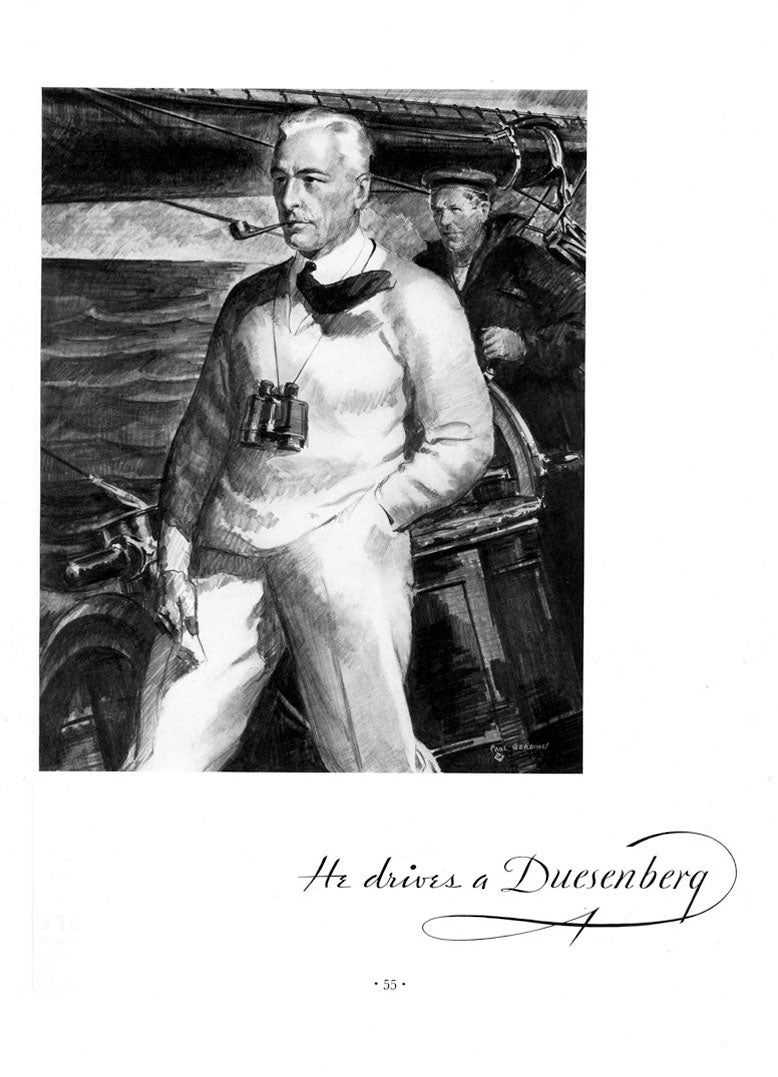
Not only men bought Duesenbergs during the Great Depression. Powerful actresses such as Mae West would also go out and buy Duesenbergs. These self-made women were not forgotten when making ads about the Model J Duesenberg. Duesenberg would be one of the first companies ever to market their automobiles directly to women, not just women of elite power in dresses either. The advertiser also marketed to rugged females who, like their fellow man, enjoyed the outdoors and the challenges that came with it. Not only did he drive a Duesenberg in the Great Depression, she drove a Duesenberg as well. This empowerment of women in a male dominated field was a stroke of genius. It worked as well; Marion Davis, an American film actress, ordered her Duesenberg Town Car in 1935. !!!error: Indecipherable SUB-paragraph formatting!!! She was one of many women who would go out of their way to order a Duesenberg Model J in the mid 1930s. The female reactions to the ads were very positive with elite women across the world. On the red carpet at a major event a beautiful blond haired girl emerged ready to enjoy a night of elegance at the opera. In her stately attire her picture would be taken as she walked down the red carpet, “ She Drives a Duesenberg.” !!!error: Indecipherable SUB-paragraph formatting!!!
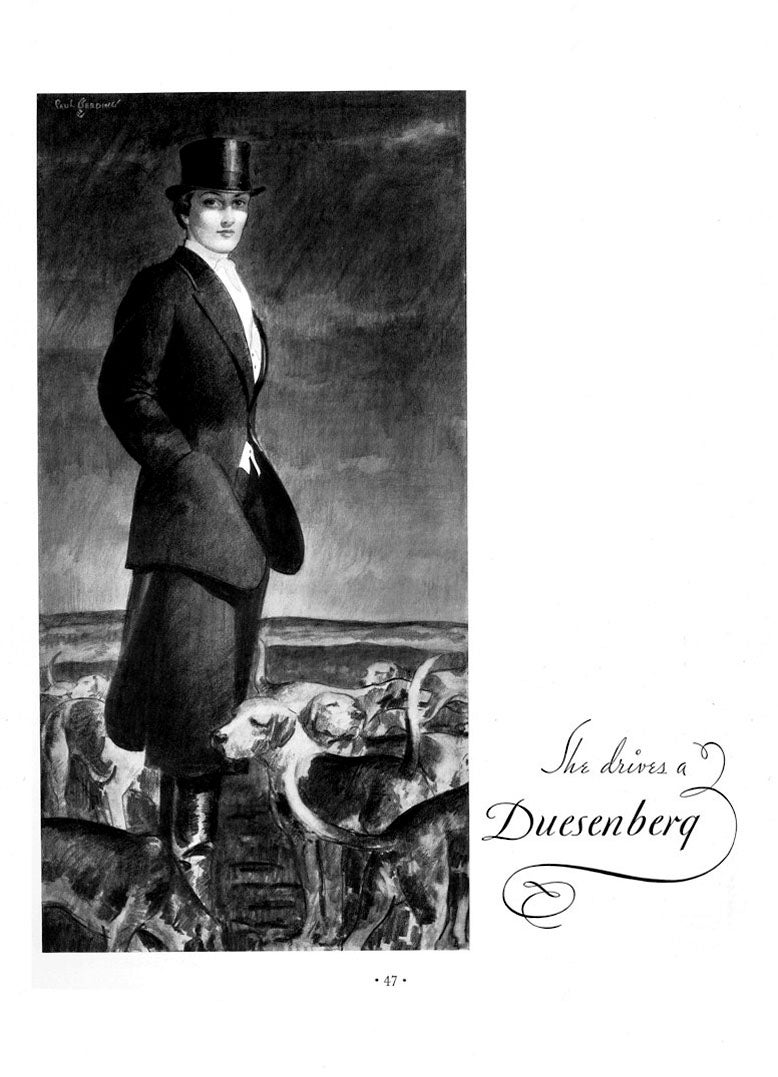
The final ads from Duesenberg were the ones that would capture the imagination of pop culture and automotive enthusiast more than any other. This swan song would be a perfect ending for the advertising of the Duesenberg Automobile Company. The ads were grand, they were beautiful, but perhaps most importantly they offered the public something different. They were a metaphor for the Duesenberg nameplate, striving to bring a competitive product to the table that was both different and magnificent at the same time. The final round of Duesenberg ads personified the Model J. The people in the final ads were ambassadors for Duesenberg products. People of fine attire with magnificent power wealth, like the Duesenberg Model J, they commanded attention. Even in an era of depression one would see these fictional characters and know they were not only important but that they were thriving in an era when many struggled just to survive. The fictional characters, like the Duesenberg were products of a bygone era. That is what made the Duesenberg Model J successful. It was a final attempt by people to hold onto the nostalgia of the 1920s. The marketing reminded people of a better era, an era when one did not have to worry about falling stocks or the financial crisis.
By 1937, the Duesenberg Automobile Company closed its doors for the final time. Throughout the lifespan of Duesenberg the company produced the finest engineered automobiles on the market. The engines that powered every Duesenberg product, like the water that flowed through every river in the world, gave life to an otherwise lifeless object. Fred and Augie Duesenberg knew this throughout the development of their engines and automobiles. Yet, they could not find a business for their outstanding products. The Duesenberg Company barley produced over one thousand automobiles over the span of almost twenty years. Their engine building during World War One was not much more successful. Therefore the company never had any true financial success.
As an automobile however, regardless of cost the company continually found success. Even today the world’s elite buy Duesenbergs. Jay Leno has six of them and Ralph Lauren owns a Duesenberg Model J as well. A company such as Duesenberg cannot measure the success on something as arbitrary as sales records. The success of the masterfully engineered Model J can be attributed to the excellent advertisement and marketing of the company. The Model J and its advertising harkened back to an era of past glory. Duesenberg advertisements not only captured the minds of the wealthy but it was also successful in making them pay exuberant amounts of money. They did this to acquire bespoke hand crafted automobiles of a better past, in a time when a massive population of the world was lucky if they could afford to pay for something as basic as food. The Duesenberg Model J, or the company as a whole might not have been successful as selling products however; their advertising will forever serve as an example of how to market a prestigious product during an economic wasteland. The power of nostalgia knows no bounds.
!!! UNKNOWN CONTENT TYPE !!!
!!!error: Indecipherable SUB-paragraph formatting!!! Bill M. Jon, Duesenberg Racecars andPassenger Cars Photo Archive. Hudson, Wisconsin, Iconografix. 2005 pg.98.
!!!error: Indecipherable SUB-paragraph formatting!!! USInflation Calculator !!!error: Indecipherable SUB-paragraph formatting!!!
!!!error: Indecipherable SUB-paragraph formatting!!! Meyers,Jeffery. Gary Cooper: American Hero. Morrow.New York. 1998.
!!!error: Indecipherable SUB-paragraph formatting!!! Old Cars Weekly September 2015 Issue.
!!!error: Indecipherable SUB-paragraph formatting!!! Gary Cooper: American Hero.
!!!error: Indecipherable SUB-paragraph formatting!!!
Wikipedia Duesenberg Model J
!!!error: Indecipherable SUB-paragraph formatting!!!
!!!error: Indecipherable SUB-paragraph formatting!!! PearceWilliam. Duesenberg Aircraft Engines ATechnical Description. Los Osos, California, Old Machine Press. 2012.
!!!error: Indecipherable SUB-paragraph formatting!!! Duesenberg Ad for the Special A and Special A3 engines from the May 15, 1915edition of Aerial Age Weekly.
!!!error: Indecipherable SUB-paragraph formatting!!! Duesenberg Aircraft Engines A TechnicalDescription.
!!!error: Indecipherable SUB-paragraph formatting!!! Duesenberg ad from 1917 featured in the Ordinance Engineering Corporation(ORENCO) trainer.
!!!error: Indecipherable SUB-paragraph formatting!!! Duesenberg Aircraft Engines a Technical Description.
!!!error: Indecipherable SUB-paragraph formatting!!! Duesenberg ad from 1918 featured in Motor Boating magazine August 1918 issue.
!!!error: Indecipherable SUB-paragraph formatting!!! Duesenberg ad from 1918 featured in Motor Boating magazine February 1918 issue.
!!!error: Indecipherable SUB-paragraph formatting!!! AscherCharlie. In Honor of Labor Day, a brief historyof labor saving innovations . HemmingsClassic Car.
!!!error: Indecipherable SUB-paragraph formatting!!! Duesenberg Racecars and Passenger Cars PhotoArchive.
!!!error: Indecipherable SUB-paragraph formatting!!! Duesenberg Racecars and Passenger Cars PhotoArchive.
!!!error: Indecipherable SUB-paragraph formatting!!! “Round the World Fliers Choose Packard Eight” ad from 1924 issue of Life magazine.
!!!error: Indecipherable SUB-paragraph formatting!!! “Serving America’s Aristocracy” Packard ad from 1926 Time magazine.
!!!error: Indecipherable SUB-paragraph formatting!!! DuesenbergModel A two page ad featured in the January 1924 issue of Motor Age magazine.
!!!error: Indecipherable SUB-paragraph formatting!!! Duesenberg Model A ad featured in the July 1924 issue of Motor Age magazine.
!!!error: Indecipherable SUB-paragraph formatting!!! E.L Cord Buys Duesenberg Motors Plant The Indianapolis Star October6 th 1926.
!!!error: Indecipherable SUB-paragraph formatting!!! NewportJ. Herbert & Steinwedel Louis, TheDuesenberg: The Story of America’s Premier Car. Pg. 34.
!!!error: Indecipherable SUB-paragraph formatting!!! ElbertJ. L. Duesenberg Mightiest American MotorCar. Pg. 31.
!!!error: Indecipherable SUB-paragraph formatting!!! Blanchard F. Harold, 265 Horse Power…116 MilesPer Hour . MoToR.
!!!error: Indecipherable SUB-paragraph formatting!!! Baruth, Jack “ Gilded Age .” Pg.76 Road and Track. October 2014.
!!!error: Indecipherable SUB-paragraph formatting!!! Blanchard F. Harold, 265 Horse Power…116 MilesPer Hour . MoToR.
!!!error: Indecipherable SUB-paragraph formatting!!! Ibid.
!!!error: Indecipherable SUB-paragraph formatting!!! Duesenberg Racecars and Passenger Cars PhotoArchive. Pg 104
!!!error: Indecipherable SUB-paragraph formatting!!! NewportJ. Herbert & Steinwedel Louis, TheDuesenberg: The Story of America’s Premier Car. Pg. 35.
!!!error: Indecipherable SUB-paragraph formatting!!! VariousDuesenberg advertisements featuring body styles of the Duesenberg Model J. Allprinted in 1929 when the car was released. Advertisements located in theachieves of the Auburn Cord and Duesenberg Museum.
!!!error: Indecipherable SUB-paragraph formatting!!! Ibid .
!!!error: Indecipherable SUB-paragraph formatting!!! Duesenberg Model J advertisement from TheMotor issue released in October 1929.
!!!error: Indecipherable SUB-paragraph formatting!!! Frostick, Michael. Advertising and theMotorcar. Lund Humphries, London. 1970 pg. 91.
!!!error: Indecipherable SUB-paragraph formatting!!! EinsteinW. Arthur, Ask the Man Who Owns One: AnIllustrated History of Packard Advertising. Pg 126.
!!!error: Indecipherable SUB-paragraph formatting!!! EinsteinW. Arthur, Ask the Man Who Owns One: AnIllustrated History of Packard Advertising pg. 127.
!!!error: Indecipherable SUB-paragraph formatting!!! Duesenberg Model J advertisement from CountryLife in 1931 located on oldcarsadvertising.com.
!!!error: Indecipherable SUB-paragraph formatting!!! Various 1931 Duesenberg Model J advertisements located at Auburn, Cord andDuesenberg museum.
!!!error: Indecipherable SUB-paragraph formatting!!! PressRelease Duesenberg in 1931. IncreasedDemand For Strictly Custom Built Cars. Press release found at Auburn, Cord,Duesenberg Museum.
!!!error: Indecipherable SUB-paragraph formatting!!!
A Duesenberg JN? DuesenbergClub Newsletter. Located at the Auburn Cord and Duesenberg museum.
!!!error: Indecipherable SUB-paragraph formatting!!!
Robin, Johnson,
The Great Depression.
CrabtreePublications. New York. 2014
!!!error: Indecipherable SUB-paragraph formatting!!!
Duesenberg Racecars and Passenger Cars PhotoArchive
. Pg. 106.
!!!error: Indecipherable SUB-paragraph formatting!!!
Duesenberg Racecars and Passenger Cars PhotoArchive
. Pg. 110.
!!!error: Indecipherable SUB-paragraph formatting!!!
Ibid
pg. 118.
!!!error: Indecipherable SUB-paragraph formatting!!!
“HeDrives a Duesenberg”
(Yachtsman)
Vanity Fair
September 1935.
!!!error: Indecipherable SUB-paragraph formatting!!!
Duesenberg Racecars and Passenger Cars PhotoArchive
. Pg. 119.
!!!error: Indecipherable SUB-paragraph formatting!!! “SheDrives a Duesenberg” (Opera) Esquire Magazine May 1935.
 For Sweden
> JR1
For Sweden
> JR1
01/05/2016 at 12:14 |
|
I was going to recommend expelling you for plagiarism, but then I saw the sources.
 Party-vi
> JR1
Party-vi
> JR1
01/05/2016 at 12:16 |
|
Near and dear to my heart, this was an awesome piece on Duesenberg.
 For Sweden
> Party-vi
For Sweden
> Party-vi
01/05/2016 at 12:21 |
|
Packard drivers be like
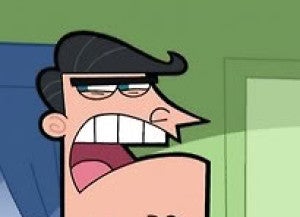
 Party-vi
> For Sweden
Party-vi
> For Sweden
01/05/2016 at 12:23 |
|
I heard it in his voice.
 JR1
> For Sweden
JR1
> For Sweden
01/05/2016 at 12:49 |
|
Hahaha it might be overkill. But that is exactly what my professor wanted for this paper. Overkill of sources
 JR1
> Party-vi
JR1
> Party-vi
01/05/2016 at 12:50 |
|
Thank you I am glad you liked it. The research was a lot of fun